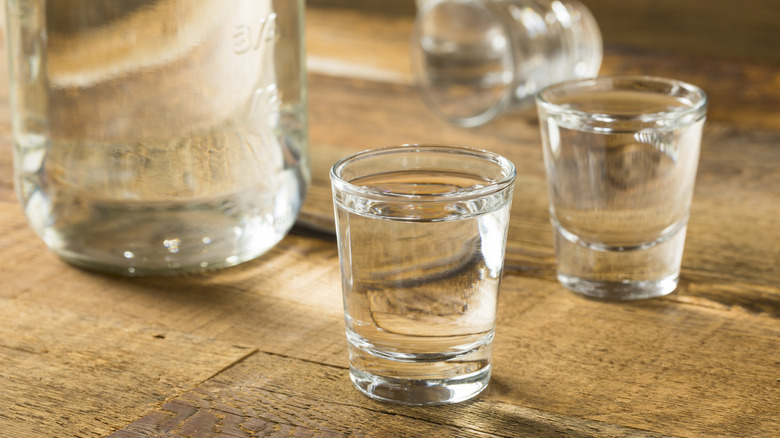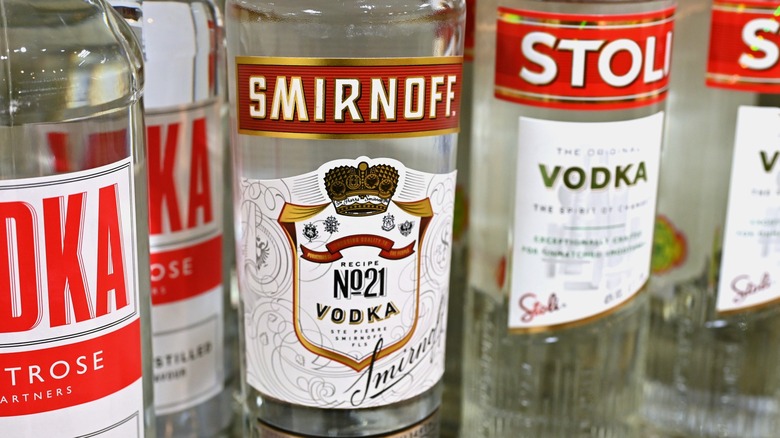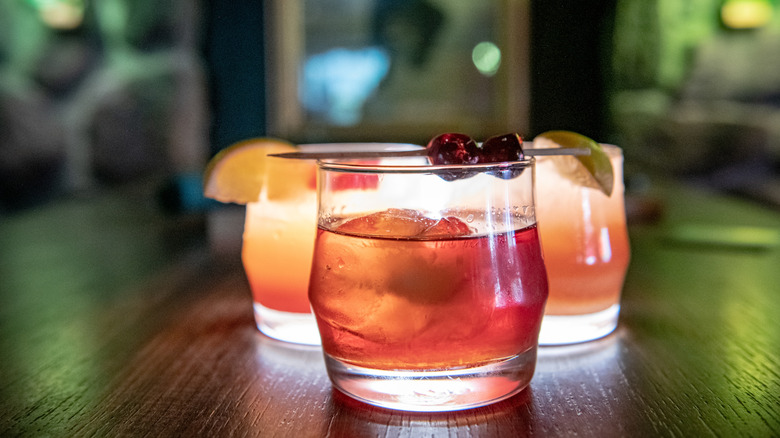What Makes Vodka Gluten-Free?
From cocktails to sauces, vodka is as much a staple at the bar as it is in the kitchen. A splash of vodka can unlock the secret to juicy fried chicken or the best pasta sauce you've ever made and is key for a stress-melting dirty martini. If you're following a gluten-free diet it may seem easier to make that martini than it is to decide if it's safe to drink. That's because the idea of gluten-safe grain alcohol seems contradictory. Gluten-free vodka does exist, though, and it's all thanks to the distillation process.
Wheat is one of the cereal grains used to make vodka, which is why those who avoid gluten question whether vodka is safe. As those grains go through the distillation process, though, gluten proteins fall away and what's left is pure and gluten-free vodka. However, distilled vodka can have cross-contact with gluten during any of the processes after distillation. Cross-contact can also be a problem when preparing and serving drinks or food containing vodka. You could get gluten in your vodka drink if you don't use gluten-free mixers or a bartender puts a biodegradable wheat straw in your drink.
How distilled vodka becomes gluten-free
The first step to making vodka is to create a cereal grain mash often made from wheat or rye that is fermented, producing ethanol. Then, the mixture is filtered to remove the mash and other contaminants. Gluten is still present as the filtered mixture goes into distillation, where it is heated. During distillation, molecules with a lower boiling point vaporize. That vapor is captured, cooled, and becomes the distilled, pure vodka. Gluten particles are vaporized during this distillation process. Many brands distill their product multiple times to further purify the vodka, resulting in plenty of gluten-free choices from the top shelf and even among the bottom shelf vodkas experts say are worth your money.
Federal guidelines for gluten-free labeling require a product to contain less than 20 parts per million of gluten proteins, so a vodka could be labeled gluten-free and contain the protein in lesser amounts. Some companies, for example, take one more step to better the flavor of their product, adding a little bit of the mash, flavorings, or other ingredients into the vodka after distillation. The process enhances the flavor of the vodka, but can also add gluten back into the mix. Gluten can also sneak back into vodka if it's manufactured in a facility that processes other products containing gluten. To ensure a vodka is completely gluten-free, choose a brand that uses corn or potato mash to make their vodka instead of wheat, barley, or rye.
Is there gluten in flavored vodka?
Vodka is flavored using natural and artificial flavorings or by infusing alcohol with natural ingredients like berries, spices, herbs, and fruit. Whether the product is gluten-free relies on the flavoring agents that are used in the vodka. While many flavored vodka brands are gluten-free, natural and artificial flavorings could be synthesized using a base like wheat or rye that contains gluten.
Smoke flavoring is one of a couple of red flag flavors for people avoiding gluten, along with anything that contains malt. Smoke and malt flavorings are often made using barley flour and will contain trace amounts of gluten. If this is the case in your flavored vodka, you'll most likely see wheat, barley, or rye listed in the ingredients thanks to the U.S. Department of Agriculture, which requires these ingredients to be listed separately on labels instead of being included under the umbrella of "natural flavors."
Many flavored vodkas also contain some coloring to add to the aesthetic, like red coloring for berry-flavored drinks or the shocking blue of some tropical-flavored alcohols. Most artificial colors do not contain gluten, but watch out for caramel coloring. The largest caramel coloring manufacturer in the world, a company called DD Williamson, uses wheat, corn, and beets in production in some of its U.K. facilities. However, gluten and wheat are not used in caramel color production in plants located in North and South America.


